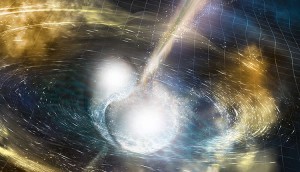Eight Greek scientists participate in what could be characterized as the most remarkable scientific discovery of contemporary physics, namely the detection and observation of gravitational waves by the Laser Interferometer Gravitational-wave Observatory (LIGO).
A huge scientific project is underway with the collaboration of 1,280 scientists and engineers around the globe, who take part in it through the LIGO Scientific Collaboration (including the GEO Collaboration), the Virgo Collaboration with the support of Centre National de la Recherche Scientifique (CNRS), Istituto Nazionale di Fisica Nucleare (INFN) and Nikhef as well as the European Gravitational Observatory.
This “dream” team of researchers includes eight distinguished Greek scientists: Michael Agathos, K. Chatzioannou, Vicky Kalogera (Northwestern University), Erotokritos Katsavounidis (MIT), Antonis Kontos (MIT), C. Markakis, Andrew Melatos (University of Melbourne) and Mary Sakellariadou (King’s College).
The first detection of gravitational waves took place in September, 2015 and two more detections have been made so far (December 2015 and January 2017), marking a major breakthrough in astronomy and thus confirming Einstein’s prediction about a century ago, who had envisioned a universe where the dimensions of space and time are interwoven and dynamic.
All three gravitational wave detections are correlated with the observation of two black holes merging into a new black hole and this process is what generates gravitational waves that can be “heard” by the extremely sensitive LIGO detectors. As senior astrophysicist Vicky Kalogera told ellines.com, these detections are revealing an intriguing black hole population whose existence was unknown to scientists until now.
On Monday, scientists, among whom was Ms Kalogera, announced a new kind of gravitational wave signal which was caused by the collision of two dead stars, or neutron stars. According to scientists, it has been confirmed that this type of mergers results in the production of the gold and platinum which exists in the universe. The “kilonova”, as this new observation is called, has provided answers regarding the origins of heavy metal in our universe as well as an explanation for the gamma-ray bursts observed by researchers since the 60’s.
Source: thegreekobserver.com
Ask me anything
Explore related questions





